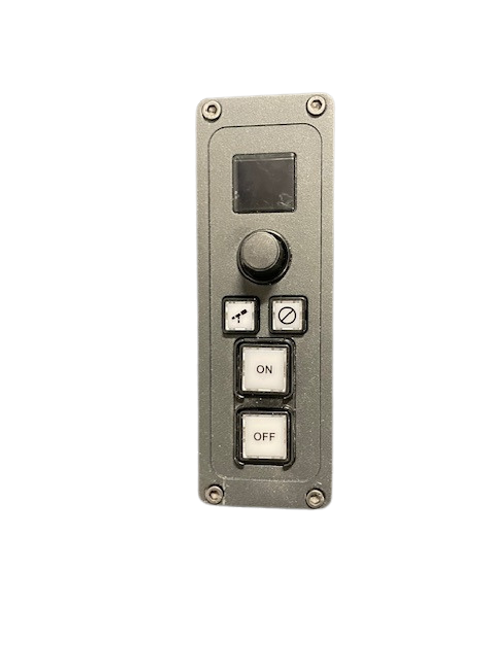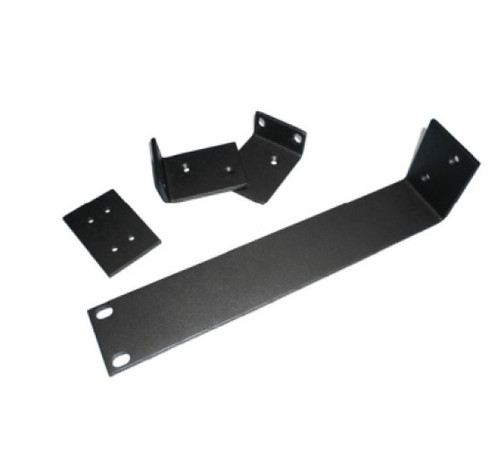Overview
The Axia xSelector combines the routing functions of an XY router control panel with the audio outputs of an Axia xNode. In addition to analog, AES3 and headphone outputs, the Router Selector Node also features an analog and an AES3 input -- ideal for production or news studios where operators both create and play audio streams. Six convenient “radio buttons” can be quickly programmed for instant access to favorite sources.
Features
-
Fanless design for silent in-studio operation.
-
High-resolution front-panel multi-function OLED display meters inputs and outputs and provides audio source selection controls.
-
Local I/O connections via industry-standard RJ-45 or XLR audio connectors,.
-
In addition to being able to select audio streams from the Livewire® network for use locally, the xSelector features one stereo input and one stereo output, allowing fast network distribution of locally created streams from audio workstations or portable audio devices. Each xSelector can create 1 stereo Livewire stream, which becomes available to other devices on the Livewire network.
-
Local I/O is presented on both AES digital and analog balanced inputs and outputs. The user can feed audio into either a balanced analog input or an AES input.
-
Both the AES and analog outputs are active simultaneously; both outputs have the same audio present.
-
Includes two GPIO closures presented on standard DB-15 connectors for machine control of associated devices.
-
xSelector’s stereo outputs can be assigned to output either the locally-created audio stream, or a single stereo Livewire stream acquired from the network and easily selected from a list of available streams using the front panel OLED display.
-
Six frequently-used streams can be assigned to the front panel “radio buttons” for instant access. Filmcap buttons can be labeled with names of assigned channels if desired.
-
Dual Livewire 100BASE-T Ethernet ports for redundant connection to your Livewire audio network.
-
Front panel headphone jack and volume control make xSelector a valuable addition to dubbing and ingest stations where minimal infrastructure is desired.
-
Built-in HTTP server for easy remote control using any PC with a Web browser.
In Depth
The production-room powerhouse.
The Axia xSelector looks a lot like a traditional XY router control panel, but it’s much, much more. So much more, in fact, that you’ll make xSelector a staple in your TOC, production rooms, news stations — anywhere your talent needs to both create and consume networked audio streams.
xSelector lets talent select from all available audio streams on the Livewire network, and route them to its local output (conveniently presented in both balanced analog and AES/EBU format). xSelector is easy to use: The front-panel LCD screen lists available network sources; talent uses the adjacent selector knob to browse sources and then pushes the knob to “take” the selected source, instantly routing that source to the local outputs for use with an audio workstation, a specific console input, recording device, etc.
Also on the front panel, six film-cap “radio buttons” provide instant access to frequently-used sources. There’s also a stereo ¼” TRS jack with a volume control which supplies an internally-amplified audio output directly to talent headphones, making xSelector a perfect choice for small workstation environments by eliminating the need for an external headphone amp.

Around back, you’ll find separate left and right balanced XLR and RJ-45 connections for the analog input and output, another set of XLR and RJ-45 connectors for the AES/EBU input and output, DB-15 connectors for the two GPIO machine-logic controls, and RJ-45s for the two redundant Livewire 100BASE-T Ethernet connections.
All this functionality makes xSelector the perfect choice for news booths or dubbing stations where only one active feed is required, or for intake stations that allow non-technical folks to easily move audio from external sources (like field recorders) into the Axia network.
Specifications
Connections
AES/EBU
-
1x Stereo Input, presented on one XLR-F connection and one RJ-45 connection
-
1x Stereo Output, presented on one XLR-M connection and one RJ-45 connection
Analog
-
1x Stereo, presented on two XLR-F connections and one RJ-45 connection
-
1x Stereo, presented on two XLR-M connections and one RJ-45 connection
GPIO
- 2x DB-15, each with 5 opto-isolated inputs and 5 outputs
Network
- 2x 100BASE-T connections, presented on RJ-45
Audio
Analog Line Inputs
-
Input Impedance: >40 k Ohms, balanced
-
Nominal Input Range: Selectable, +4 dBu or -10dBv
-
Input Headroom: 20 dB above nominal inputMeta
Analog Line Outputs
-
Output Source Impedance: <50 Ohms balanced
-
Output Load Impedance: 600 Ohms, minimum
-
Nominal Output Level: +4 dBu
-
Maximum Output Level: +24 dBu
Digital Audio Inputs And Outputs
-
Reference Level: +4 dBu (-20 dB FSD)
-
Impedance: 110 Ohm, balanced
-
Signal Format: AES3 (AES/EBU)
-
AES3 Input Compliance: 24-bit with sample rate conversion
-
AES3 Output Compliance: 24-bit
-
Digital Reference: Internal (network timebase) or external reference 48 kHz, +/- 2 ppm
-
Internal Sampling Rate: 48 kHz
-
Input Sample Rate: 32 kHz to 192 kHz
-
Output Sample Rate: 44.1 kHz or 48 kHz
-
A/D Conversions: 24-bit, Delta-Sigma, 256x oversampling
-
D/A Conversions: 24-bit, Delta-Sigma, 256x oversampling
Frequency Response
- Any input to any output: +/- 0.5 dB, 20 Hz to 20 kHz
Dynamic Range
-
Analog Inputs to Analog Outputs 108dB referenced to 0dBFs, 111dB A-weighted
-
Analog Inputs to Digital Outputs 110dB referenced to 0dBFs, 113dB A-weighted
-
Digital Inputs to Analog Outputs 112dB referenced to 0dBFs, 115dB A-weighted
-
Digital Inputs to Digital Outputs 126dB
Total Harmonic Distortion + Noise
-
Analog Input to Analog Output: < 0.005%, 1 kHz, +18dBu input, +18dBu output
-
Analog Input to Digital Output: < 0.004%, 1 kHz, +18dBu input, -6dBFs output
-
Digital Input to Analog Output: < 0.004%, 1 kHz, -6dBFs input, +18dBu output
-
Digital Input to Digital Output: < 0.0003%, 1 kHz, -20dBFs
Crosstalk Isolation, Stereo Separation And Cmrr
-
Analog Line channel to channel isolation: 90dB minimum, 20Hz to 20kHz
-
Analog Line stereo separation: 85dB minimum, 20Hz to 20kHz
-
Analog Line Input CMRR: 80dB minimum, 20Hz to 20kHz
Power Supply Ac Input
-
Auto-ranging supply, 90VAC to 240VAC, 30 Hz to 60 Hz, IEC receptacle, internal fuse
-
Power consumption: 35 Watts
Operating Temperatures
- 0 degree C to +40 degree C, <90% humidity, no condensation
Regulatory
North America: FCC and CE tested and compliant, power supply is UL approved.
Europe: Complies with the European Union Directive 2002/95/EC on the restriction of the use of certain hazardous substances in electrical and electronic equipment (RoHS), as amended by Commission Decisions 2005/618/EC, 2005/717/ EC, 2005/747/EC (RoHS Directive), and WEEE.
















